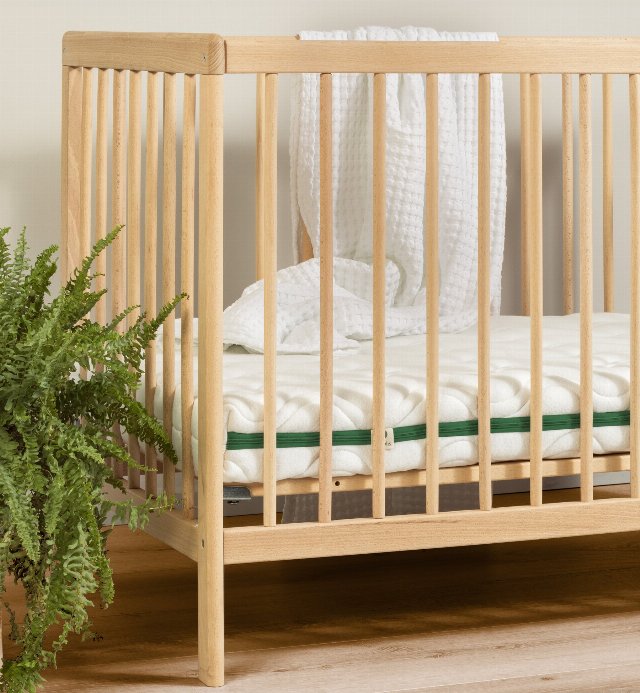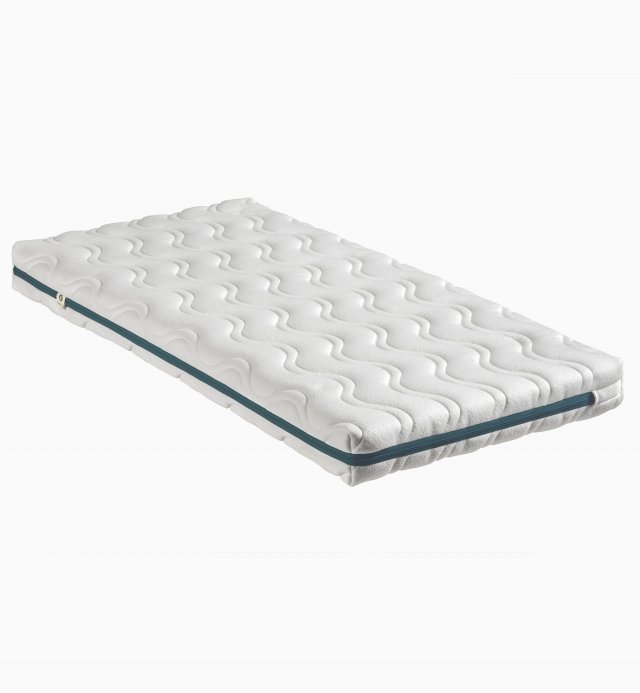Even when sleeping, babies like to feel that their parents are close by. One of the most common practices has always been co-sleeping, which makes it easier for parents to be closer during the night, in the first few months and when waking becomes frequent.
In this guide to sleeping with the cradle next to the bed, you'll find the keys to enjoying co-sleeping and making sure it poses no risk to your baby.
Is co-sleeping advisable?
Co-sleeping beds are smaller and are often used for babies up to 9 months of age. As it can be attached to a double bed, parents can more easily care for, monitor and feed the baby. Contact is total and constant throughout the night.
Why have they become so popular? Firstly, because numerous studies have highlighted the benefits of co-sleeping for child development, and these beds are ideal for this stage.
The Clinical Practice Guideline on breastfeeding devotes part of its content to co-sleeping and explains that it is a practice "that promotes a good start to breastfeeding". However, it is essential to develop safe co-sleeping. What exactly does this mean? Find out below.
What are the benefits of co-sleeping?
- Tranquillity for all: these are quiet moments that help strengthen the emotional bond. Take the opportunity to cuddle your baby or simply watch him sleep and feel relaxed.
- Breastfeeding is easier: because you're together, when baby wants to eat, the response time is shorter. This also makes it easier for him to fall asleep later on, as he's not too disturbed by the wait for a feed.
- Temperature and breathing are regulated: this is known as thermal synchronization. If the newborn is colder than normal, the mother's breast temperature rises by two degrees to stabilize him. The same applies to breathing: when the baby hears his parents breathing, his breathing is regulated. This synchronization corrects episodes of apnea.
- It reduces the risk of Sudden Infant Death Syndrome (SIDS): experts claim that this is one of the main benefits of co-sleeping. The Spanish Pediatric Association suggests that babies should sleep in the same room as their parents until the age of 6 months. This is the period during which babies can co-sleep.
Did you know that in countries like Japan, Sweden and Norway, 90% of families sleep with their babies?
5 essential tips for co-sleeping
If you're planning to co-sleep with your baby, check the following points to make sure you're doing things right:
- Room temperature: it should be neither too low nor too high. The ideal is to find a happy medium for you and your baby.
- No smoking: avoid smoking in the room before you go to sleep, so that there's no smoke in the room - in fact, it's completely inadvisable to smoke inside your home.
- An uncluttered cot: no cushions or pillows, no toys, so that the baby doesn't suffocate. Pillows are not recommended before the age of two.
- The mattress surface: it should be smooth and firm, so that the baby doesn't get trapped.
- Rest too: when your baby falls asleep, take the opportunity to sleep and recuperate. It's important to replenish your energy to feel good.
When choosing the mattress for your co-sleeping cot, give priority to those that are environmentally-friendly and made from natural materials: this is the way to guarantee healthier sleep and cleaner air in the room.
What's more, natural materials such as coconut or TENCEL™ naturally repel bacteria and dust mites. They're also anti-allergenic without requiring additional treatment.
¿Cómo son las cunas pegadas a la cama?
We already know that an extra bed is placed next to the double bed, as if it were an extension of it, but what should you look for if you want to buy one?
- The material: wood, plastic, aluminum... There are no better or worse options. Depending on the material, they will be more or less resistant.
- Size: in general, cots attached to adult beds are smaller.
- Type of bed: the cot should be adapted to a double bed. You'll also be more comfortable if you can adjust the height of the bed.
- Fixed or portable: there are models that fold up and can be easily transported around the house. So you can continue to use it at other times.
- Reclining or non-reclining: although not essential, this can be a plus if your baby suffers from reflux, as it will help him breathe better while he sleeps.
Co-sleeping beds: yes or no?
It's undoubtedly a decision for each family, but the benefits of co-sleeping beds have been proven and that's why they're so popular. They also ease baby's transition to a single bed.
Whatever you choose, remember that the important thing is that you want to experience co-sleeping at home. After that, all you have to do is apply these tips and enjoy this step where nothing will separate you.




















Leave a comment